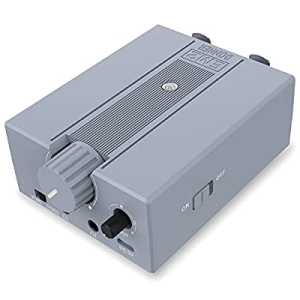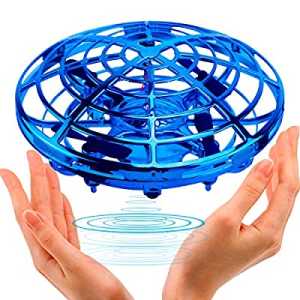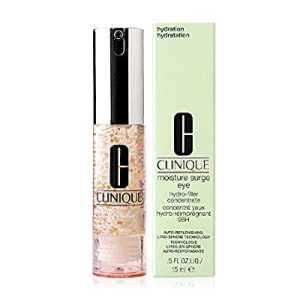
Exploring New And Emerging Treatments For Diabetic Retinopathy

Diabetic retinopathy is one of the leading causes of blindness in adults, and it is a major concern for people living with diabetes. This eye condition occurs when high blood sugar levels damage the blood vessels in the retina, leading to vision problems that can progress to severe vision loss. Fortunately, with advances in medical research, there are new and emerging treatments that show promise in improving outcomes for individuals with diabetic retinopathy. These treatments focus on halting the progression of the disease, reversing some of the damage, and preserving vision.
As new and emerging treatments for diabetic retinopathy continue to evolve, patients in Chinchwad seeking affordable options can find hope in both advanced therapies and cost-effective solutions. These innovative treatments, such as anti-VEGF injections and laser therapy, are designed to manage the condition more effectively while minimizing the risk of vision loss. Understanding the diabetic retinopathy treatment cost in Chinchwad can help patients make informed decisions about their care, ensuring they receive the latest treatment options without compromising their budget.
In this blog, we will explore some of the innovative therapies and breakthroughs in the treatment of diabetic retinopathy that may offer hope for those affected by the condition.
1. Anti-VEGF Therapy: A Breakthrough Treatment
Anti-VEGF (vascular endothelial growth factor) therapy has revolutionized the way diabetic retinopathy is treated. This treatment involves the injection of medications that block the action of VEGF, a protein that promotes the growth of abnormal blood vessels in the retina. These abnormal blood vessels are fragile and can leak fluid, leading to swelling and damage to the retina.
Anti-VEGF drugs, such as Lucentis, Eylea, and Avastin, are used to prevent the growth of these abnormal blood vessels. By blocking VEGF, these medications can reduce swelling in the retina, improve vision, and prevent further damage. Anti-VEGF therapy is typically administered through injections into the eye, with the frequency of injections depending on the severity of the condition.
While anti-VEGF therapy has been effective for many patients, researchers are exploring ways to improve this treatment, including developing longer-lasting formulations that would reduce the need for frequent injections.
2. Gene Therapy for Diabetic Retinopathy
Gene therapy is an exciting and innovative treatment that is currently being explored for diabetic retinopathy. This therapy involves inserting genetic material into a patient's cells to correct or prevent the disease. For diabetic retinopathy, gene therapy aims to restore normal blood vessel function in the retina by promoting the growth of healthy blood vessels and reducing inflammation.
Researchers are investigating the potential of using genes that code for growth factors, which can help repair damaged blood vessels and promote healing in the retina. Some early clinical trials have shown promising results, suggesting that gene therapy could be an effective way to treat diabetic retinopathy in the future. However, this treatment is still in the experimental stage and is not yet widely available.
3. Stem Cell Therapy: A Future Option for Retinal Repair
Stem cell therapy is another emerging treatment for diabetic retinopathy. Stem cells have the unique ability to develop into various types of cells, and scientists are exploring their potential to repair damaged tissues in the retina. The idea is that stem cells could be used to replace damaged retinal cells, regenerate the retina’s blood vessels, and restore normal vision.
Several approaches to stem cell therapy for diabetic retinopathy are being studied, including the use of stem cells derived from the patient’s own tissue (autologous stem cells) or from other sources, such as embryos or induced pluripotent stem cells. Although stem cell therapy shows great potential, it is still in the early stages of development and requires more research before it can become a mainstream treatment.
4. Retinal Prosthetics and Implantable Devices
For patients with advanced diabetic retinopathy who experience significant vision loss, retinal prosthetics and implantable devices offer a potential solution. These devices are designed to restore partial vision by bypassing damaged retinal cells and directly stimulating the remaining healthy cells.
One such device is the Argus II Retinal Prosthesis System, which consists of a small implant placed in the eye, along with a pair of glasses that capture images and send them to the implant. The implant stimulates the retina, sending visual information to the brain. While the device does not fully restore vision, it has shown to improve patients' ability to perceive light and detect movement.
This technology is still being refined, but retinal prosthetics offer hope for individuals with advanced diabetic retinopathy who are at risk of total blindness.
5. Laser Treatment Advancements
Laser treatment has been a standard approach for treating diabetic retinopathy for decades. The procedure involves using a laser to seal leaking blood vessels or to destroy abnormal blood vessels in the retina. While traditional laser treatments are effective in stabilizing the condition, they can sometimes cause side effects, such as loss of peripheral vision.
Recent advancements in laser technology, including focal laser treatment and panretinal photocoagulation, have improved the precision and outcomes of laser therapy. Newer lasers can focus on specific areas of the retina, minimizing damage to healthy tissue and reducing side effects. In addition, researchers are exploring the potential of micropulse laser therapy, which uses a lower-energy laser to target damaged tissue without causing excessive heat. This approach can reduce the risk of side effects and improve the overall success of the treatment.
6. New Pharmacological Agents
In addition to anti-VEGF therapy, researchers are investigating other pharmacological agents that could be used to treat diabetic retinopathy. These include steroid injections, anti-inflammatory drugs, and medications that target other molecular pathways involved in the disease process.
For example, ozurdex is a steroid-based treatment that can reduce inflammation and macular edema (swelling in the retina). It has been shown to improve vision in some patients with diabetic retinopathy, though it is typically used for patients with more advanced forms of the condition.
Other drugs being studied include gene-silencing agents that target the underlying causes of blood vessel growth in the retina. These treatments aim to prevent the progression of diabetic retinopathy at the molecular level.
7. Artificial Intelligence in Diagnosing Diabetic Retinopathy
While not a treatment in itself, the use of artificial intelligence (AI) in diagnosing diabetic retinopathy is revolutionizing how the condition is managed. AI algorithms can analyze retinal images with great accuracy, detecting early signs of diabetic retinopathy that may not be visible to the human eye.
Early detection is critical for preventing severe vision loss, and AI-powered tools can help healthcare providers diagnose the condition more quickly and accurately. These tools also enable healthcare professionals to monitor disease progression more efficiently, ensuring that patients receive timely treatments.
Conclusion
Emerging treatments for diabetic retinopathy offer hope for better management of this potentially vision-threatening condition. From anti-VEGF therapy and gene therapy to advancements in stem cell treatments and laser technology, the future of diabetic retinopathy treatment looks promising. Early detection and intervention remain crucial, and patients with diabetes should continue to prioritize regular eye exams to catch any signs of retinopathy early.
As research progresses, we can expect even more innovative treatments to emerge, helping to preserve vision and improve the quality of life for those affected by diabetic retinopathy. If you have diabetes, it’s important to work closely with your healthcare provider and eye specialist to discuss the best treatment options available to you.
Author Bio
Article Comments
No Comments!
At present there are zero comments on this article.
Why not be the first to make a comment?
Similar Articles
Search Pages
Upgrade User Account
account to full use of editor,
including hyperlinks
Article Categories
There are zero sub-categories in this parent category.
There are zero sub-categories in this parent category.











